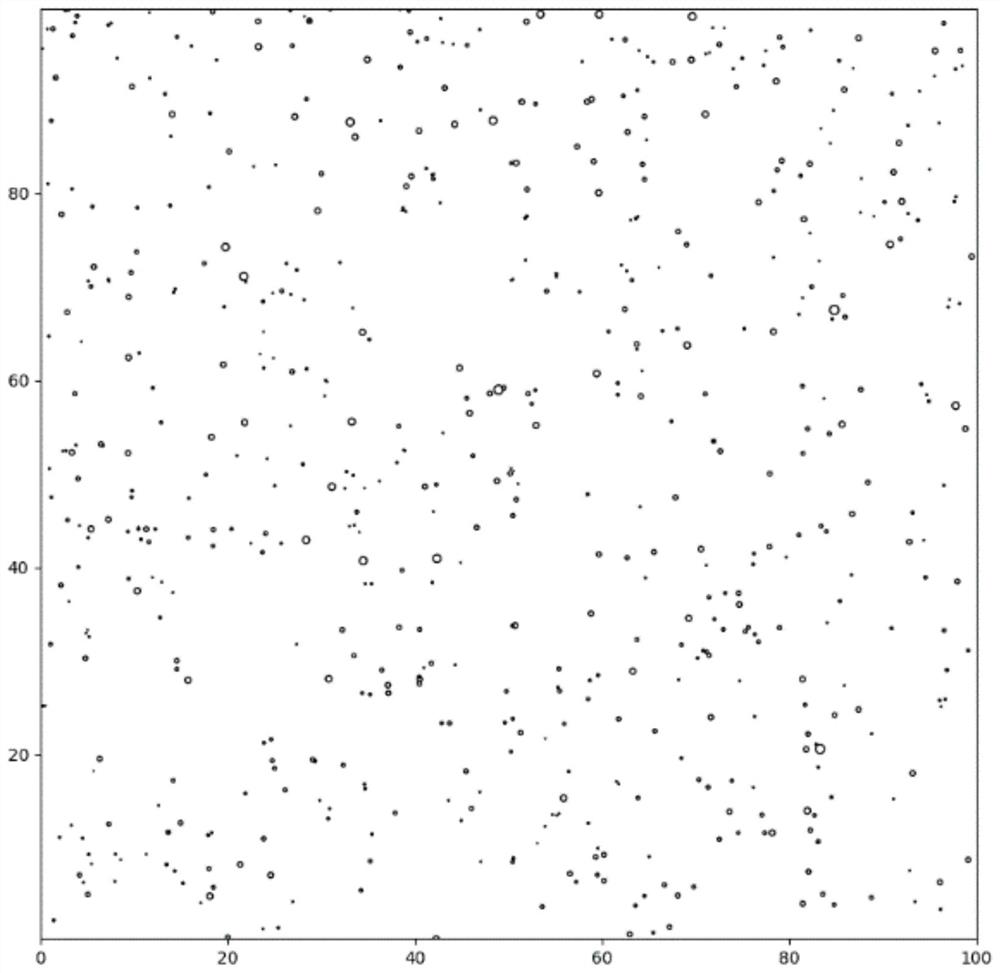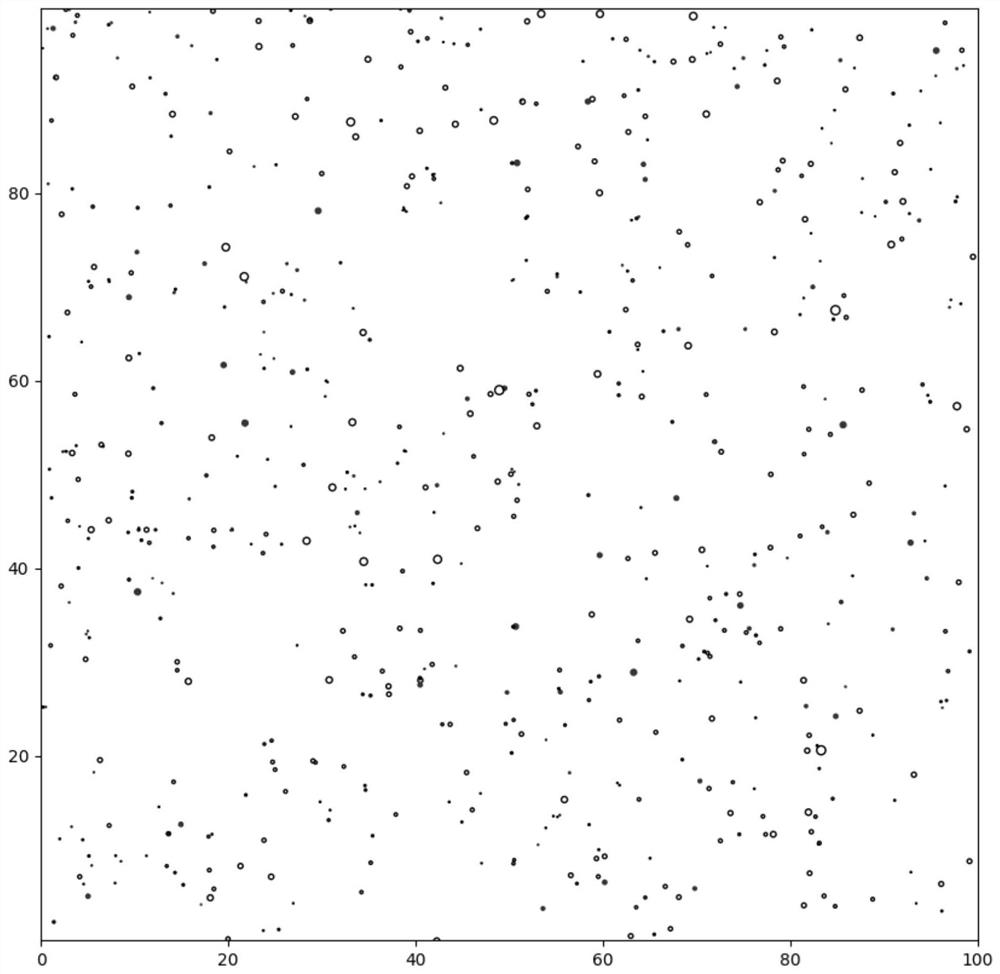Secondary forest thinning method based on stand development index
A forest stand and index technology, applied in forestry, agriculture, application, etc., can solve the problems of low calculation efficiency, only focusing on the accuracy of thinning plan, ignoring the determination of the optimal thinning intensity of forest stands, etc., to promote positive succession , improve the quality of forest stands, and ensure the effect of accuracy and rationality
- Summary
- Abstract
- Description
- Claims
- Application Information
AI Technical Summary
Problems solved by technology
Method used
Image
Examples
Embodiment 1
[0140] In this application, a natural secondary forest in the Jingouling Forest Farm in Wangqing County, Jilin Province is divided into a research area.
[0141] A secondary forest stand with an area of 100m × 100m was selected, and the adjacent grid survey method was used to divide it into 100 survey units with a fixed standard of 10m × 10m. Record the tree species name, DBH, tree height, and location coordinates of the sample trees.
[0142] According to "China Forest", this area belongs to the northeast temperate coniferous forest and mixed coniferous and broad-leaved forest area. The classification results of tree species are shown in the following table:
[0143]
[0144] The stand development index is used as a multi-objective model of secondary forest tending thinning, and the initial value of the model is calculated:
[0145]
[0146] The spatial coordinates of stand samples are as follows figure 1 As shown, the initial parameters of the stand are shown in th...
PUM
 Login to View More
Login to View More Abstract
Description
Claims
Application Information
 Login to View More
Login to View More - R&D
- Intellectual Property
- Life Sciences
- Materials
- Tech Scout
- Unparalleled Data Quality
- Higher Quality Content
- 60% Fewer Hallucinations
Browse by: Latest US Patents, China's latest patents, Technical Efficacy Thesaurus, Application Domain, Technology Topic, Popular Technical Reports.
© 2025 PatSnap. All rights reserved.Legal|Privacy policy|Modern Slavery Act Transparency Statement|Sitemap|About US| Contact US: help@patsnap.com



